A few days ago I received the Pipo X7 that I had pre-ordered back in January.
It took so long to source & ship because it is immensely popular – after all, for less than 100€ I got:
– An Intel Baytrail Quad Core CPU @ 2.16GHz
– 2GB of low power DDR3 RAM
– A 32GB SSD drive (Samsung MBG4GC)
– An HDMI out
– WiFi b/g/n, 10/100Mbps Ethernet & Bluetooth connectivity
– 4 x USB 2.0 ports
All of that inside a slick aluminum box, not much larger than a CD, powered by a silent 12V/2.4A power supply.
But the best part is that it runs a fully activated copy of Windows 8.1 (32bit)!
Yes, Microsoft is essentially giving away Windows 8.1 for use in small devices (like set-top boxes, such as this one) with only one catch for the OEM: He is not allowed to set Google Search as the default search engine. However, this does not mean that you can not set Google as your preferred search engine if you wish (instead of the dreadful Bing).
Now, I must admit that this was largely an impulse buy for me, since I already have a full size HTPC and a Squeezebox Touch as an audio transport, but I just couldn’t resist the temptation. So, since I had it, I decided to run a series of audio-oriented tests on it.
My player of choice is Foobar, feeding a Buffalo III DAC through an Amanero Combo384. The files were stored on a file server on my LAN and the Pipo was connected to the LAN via 100Mbps Ethernet.
The first test included outputting DSD to the Amanero. All the necessary Foobar components were loaded, including of course the Super Audio CD Decoder and the necessary configuration was performed:
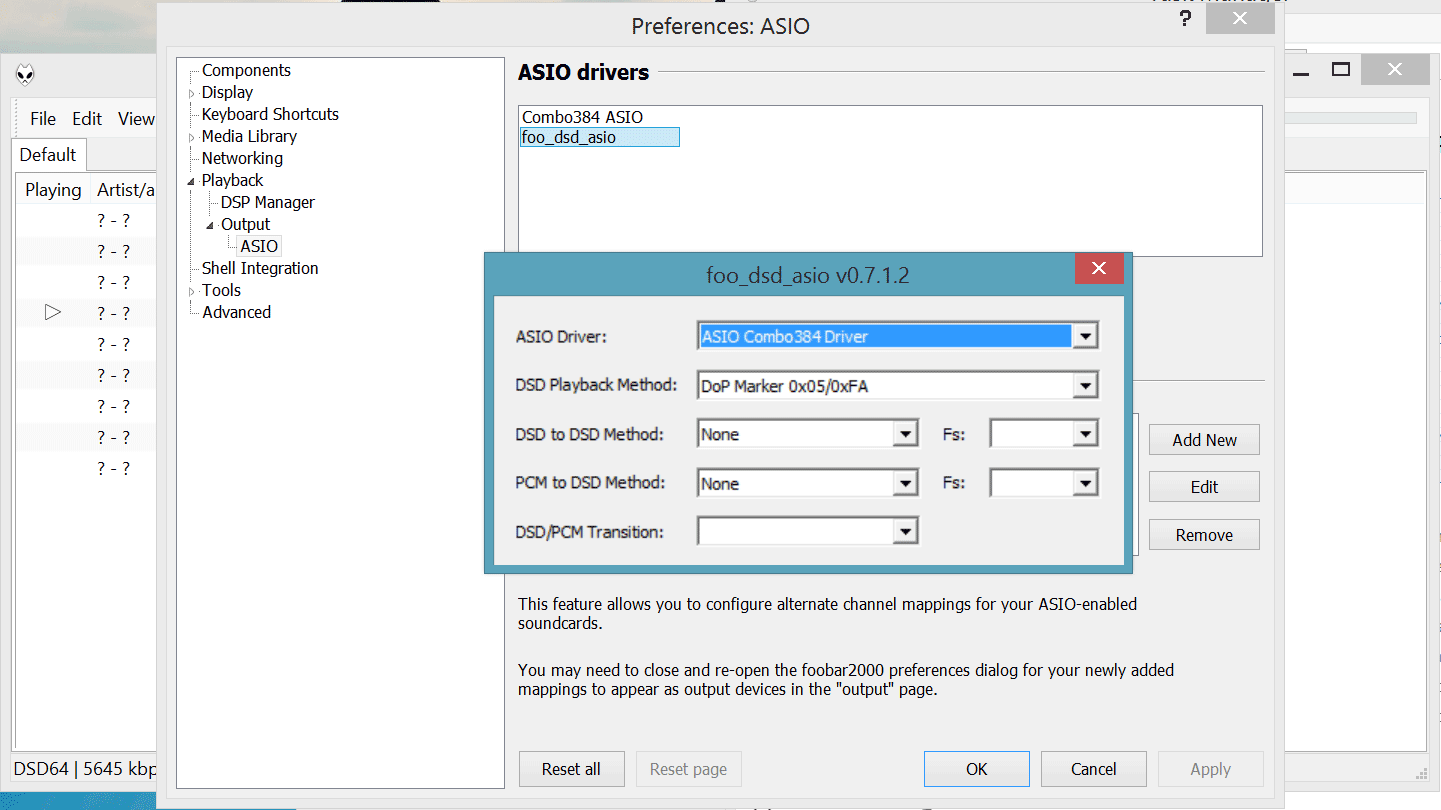
Note: There are several steps involved in getting Foobar to output DSD. It is not the purpose of this post to fully outline them. A Google search would turn up a number of guides / how-tos.
First up was a “plain” DSD64 file. The Pipo had no problem playing it back, with less than 1GB of RAM use and about ~13% CPU utilization:
Let’s make it more interesting. DSD128:
Still no problem. As a matter of fact, CPU load has actually decreased! That is probably because the DSD64 file was from a SACD ISO, so some CPU time was used in handling the big file.
Moving on to a worst case scenario: A DXD file:
Still, no sweat, with the CPU barely sweating at 16% load. RAM has not climbed above 800MBs.
Since the machine appeared to have some decent horsepower, I thought I would try the well-known SoX Resampler DSP for Foobar. I set it up as best I could, since I don’t really have much experience with the actual DSP:
I chose to go the “x4” upsampling way, with the “Best” quality setting. This meant that a 44.1KHz file would be upsampled to 176.4KHz and a 96KHz file would be upsampled to 384KHz, hitting the limits of the Amanero interface. A 192KHz file would not be supported, since that would mean that it would have to be upsampled to 768KHz. The idea was to do a benchmark, so I just played two versions of the same files, one at 44.1K and one at 96K. This was the result:
So, still no serious sweat, with the CPU averaging 29% load, with one of its cores (presumably the one doing the actual upsampling) getting about 50% usage.
At that point, I called it a day.
In conclusion, it seems that the Pipo X7 is perfectly capable of supporting audio playback, even with upsampling enabled. As a matter of fact, I might keep it as a music transport.

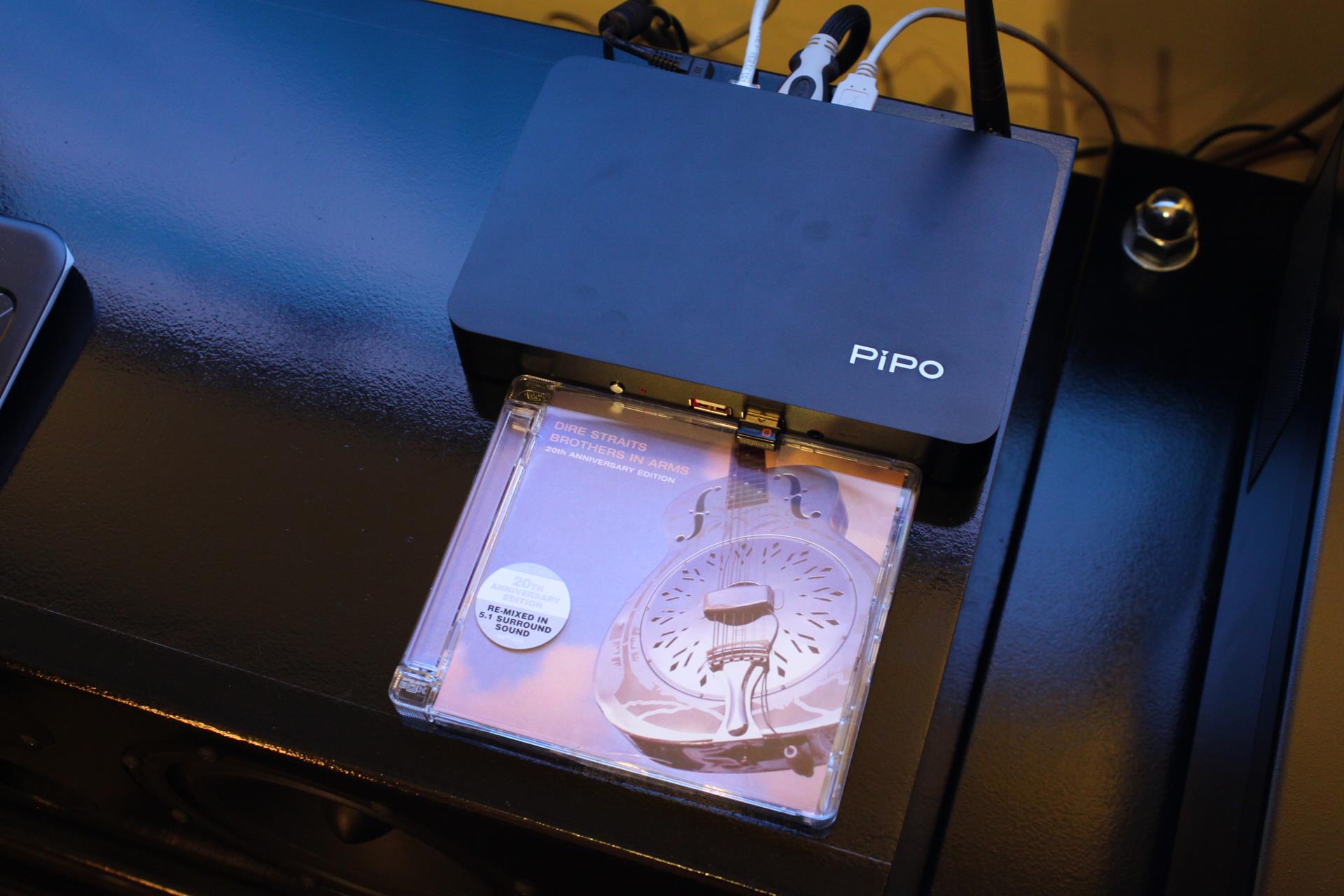
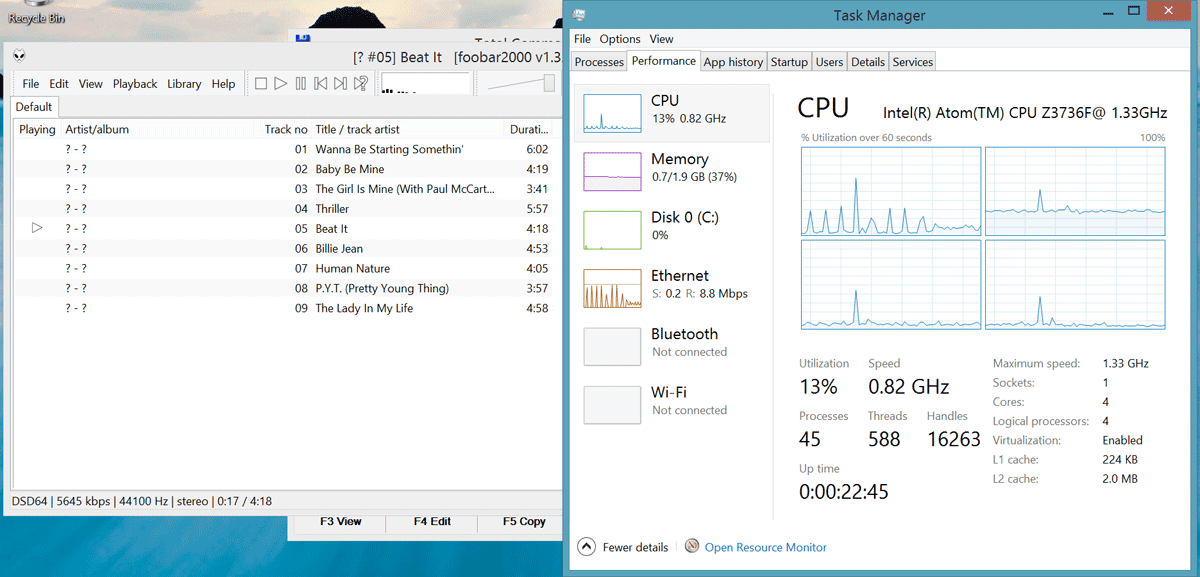
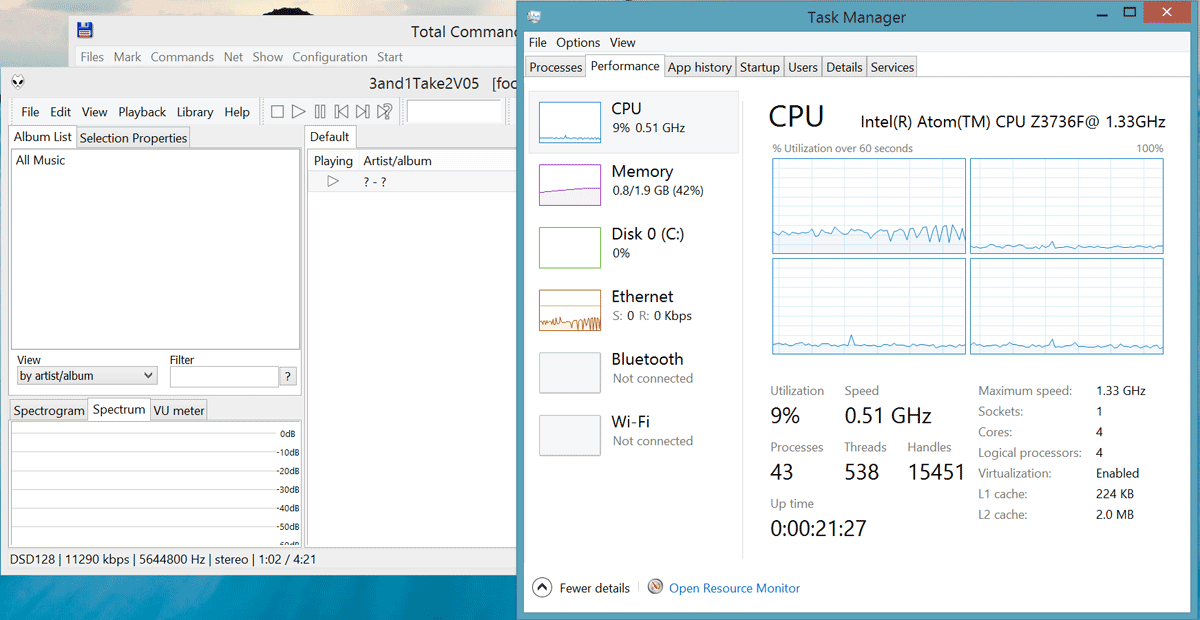
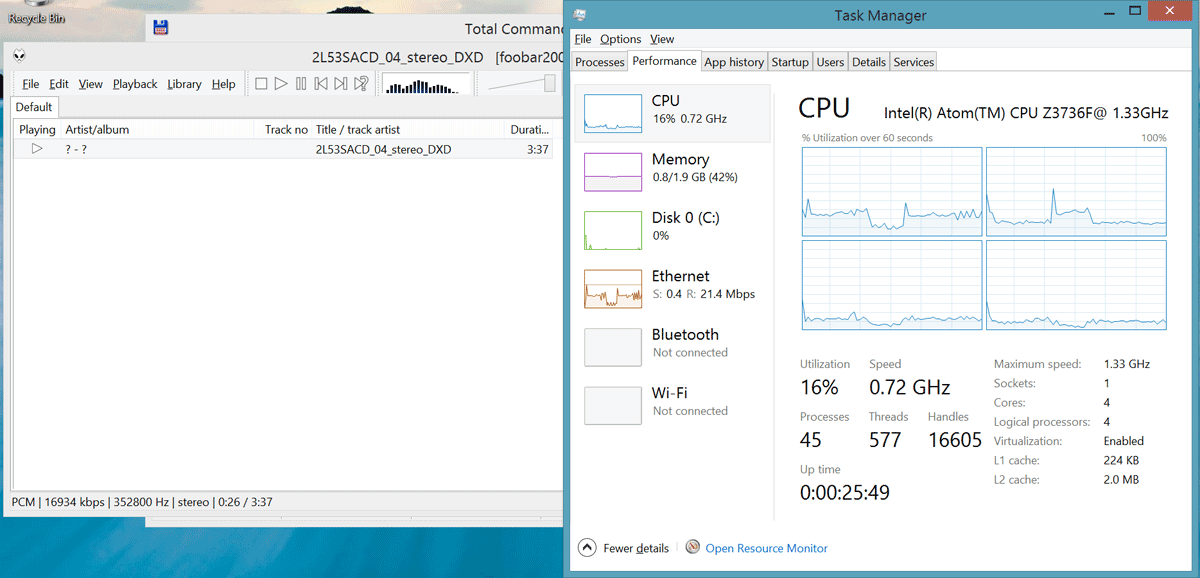
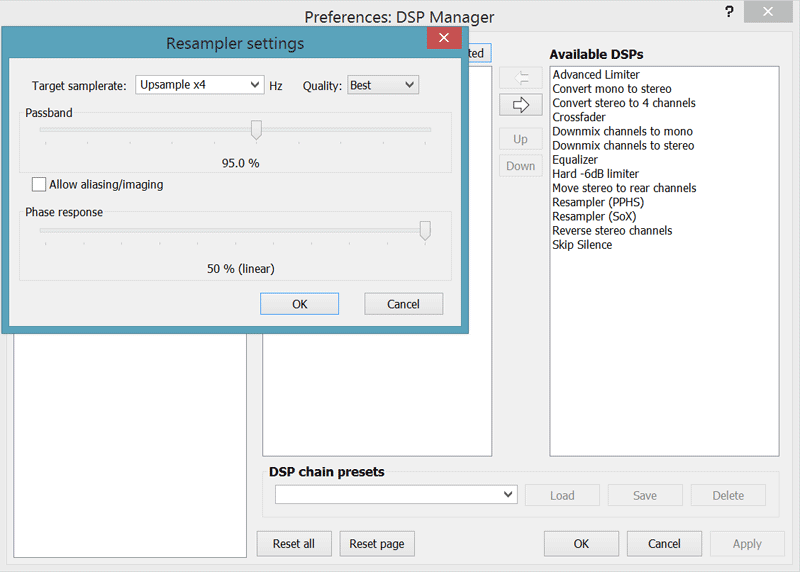
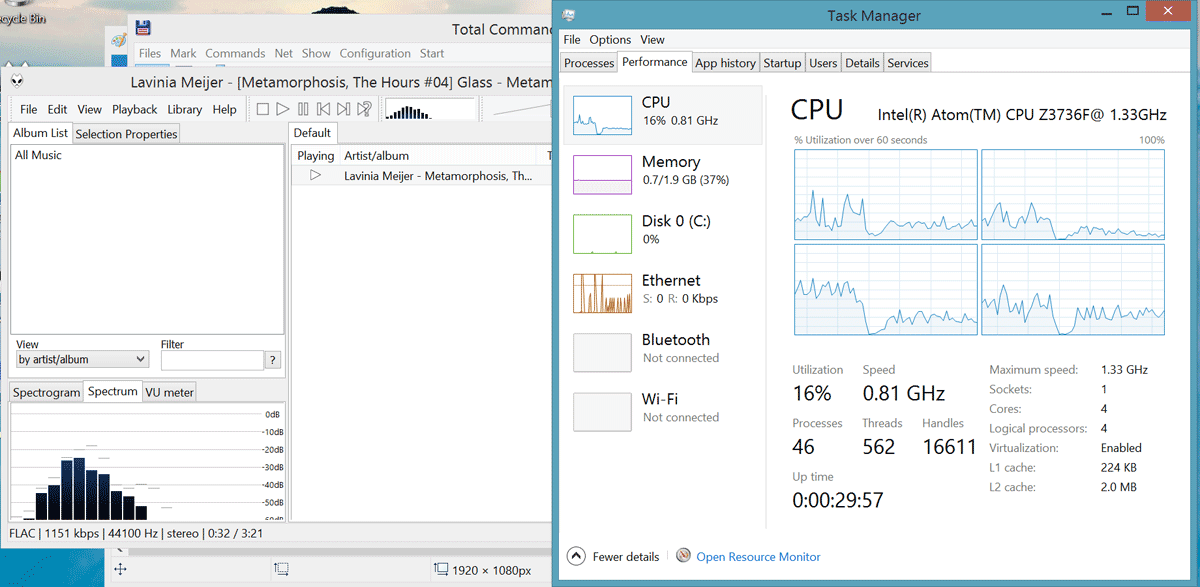
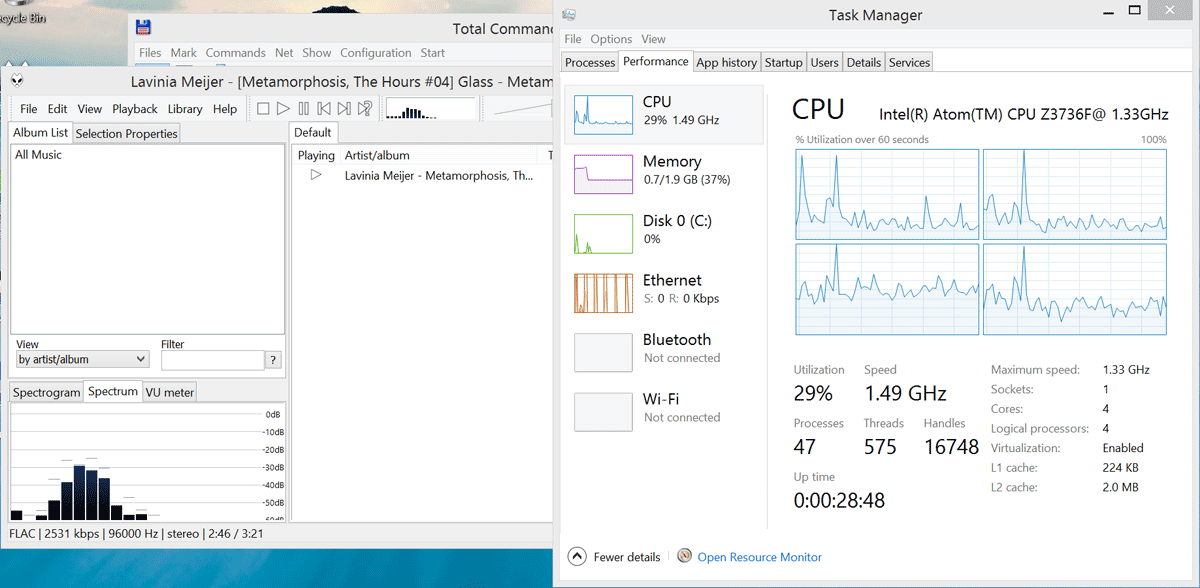
Ha! A Dire Straits man, you are clearly on the true musical path….
Box is nice too. Excellent value.
Nice, i basicly did the same. i use a windows tablet as music server. It is an Ainol Inovo 8. It also works very well. Charging is via not via usb, so data transfer is never compromised and it has got an USB3 connection.